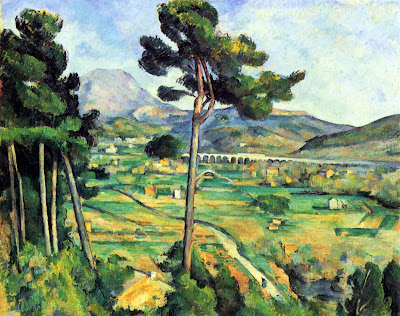FAUVISM
As an art movement Fauvism was short-lived and, in its initial forms, restricted to a few artistic personalities. It was however influential as one of the first relatively unified expressions of the art of the early 20th century. It was an essay indeed of a new art, with all the limitations of a first approach, that is, in many respects tentative and localized. And yet, it was able to reverberate later into the century in the works of Henri Matisse, one of its main representatives.
Fauvism was a moment of liberation of energies for young artists such as Derain, Vlaminck, Matisse and others. Their examples opened the way to a renewed approach to color in painting. From its beginnings in France, the style was echoed in other artistic centers in Europe and contributed to the elaboration of other viewpoints and new concepts about the structure and the functions of painting in the new century.
Indeed, the foundational or structural role of color in painting is the main or, in a sense, the “exclusive” focus of Fauvism. The work of art is a heightened expression of the encounter of the artist and his motifs in nature, in the landscape, in the city, or the encounters between the artist and his models and friends. It is a celebration of life energies.
It is indeed one of the first examples of a modern “expressionistic” art form, that is, an art based on the projection of subjective energies and states of mind shaping the look of things, objects, scenes, etc. However, the subjective power in Fauvism is controlled by the search for a new sense of order born from the objective tensions of colors and forms.
In this sense, the spirit of Fauvism, the product of a distinctive French cultural and artistic context, has to be sharply distinguished from Expressionism as developed mainly in Germany, in spite of the many formal analogies and convergences between the two art movements.
Fauvism was a moment of liberation of energies for young artists such as Derain, Vlaminck, Matisse and others. Their examples opened the way to a renewed approach to color in painting. From its beginnings in France, the style was echoed in other artistic centers in Europe and contributed to the elaboration of other viewpoints and new concepts about the structure and the functions of painting in the new century.
Indeed, the foundational or structural role of color in painting is the main or, in a sense, the “exclusive” focus of Fauvism. The work of art is a heightened expression of the encounter of the artist and his motifs in nature, in the landscape, in the city, or the encounters between the artist and his models and friends. It is a celebration of life energies.
It is indeed one of the first examples of a modern “expressionistic” art form, that is, an art based on the projection of subjective energies and states of mind shaping the look of things, objects, scenes, etc. However, the subjective power in Fauvism is controlled by the search for a new sense of order born from the objective tensions of colors and forms.
In this sense, the spirit of Fauvism, the product of a distinctive French cultural and artistic context, has to be sharply distinguished from Expressionism as developed mainly in Germany, in spite of the many formal analogies and convergences between the two art movements.
Marcelo Guimaraes Lima
André Derain
The Pool of London, 1906
Oil on canvas
657 x 991 mm
Tate Gallery, London
The Pool of London, 1906
Oil on canvas
657 x 991 mm
Tate Gallery, London
André Derain
Henri Matisse, 1905
Oil on canvas
460 x 349 mm
Tate Gallery, London
Henri Matisse, 1905
Oil on canvas
460 x 349 mm
Tate Gallery, London
Henri Matisse
La Femme au chapeau, 1905
(Woman with hat, portrait of his wife, Amélie Parayre)
La Femme au chapeau, 1905
(Woman with hat, portrait of his wife, Amélie Parayre)
Maurice de Vlaminck (1876-1958)
Restaurant de la Machine a Bougival, ca.1905
Photograph by Sharon Mollerus,
Creative Commons licensed
http://www.artcyclopedia.com/artists/vlaminck_maurice_de.html
http://www.flickr.com/photos/clairity/tags/museedorsay/
Restaurant de la Machine a Bougival, ca.1905
Photograph by Sharon Mollerus,
Creative Commons licensed
http://www.artcyclopedia.com/artists/vlaminck_maurice_de.html
http://www.flickr.com/photos/clairity/tags/museedorsay/
Maurice de Vlaminck, (1876—1958)
Landscape with Red Trees 1908
Landscape with Red Trees 1908







Comments